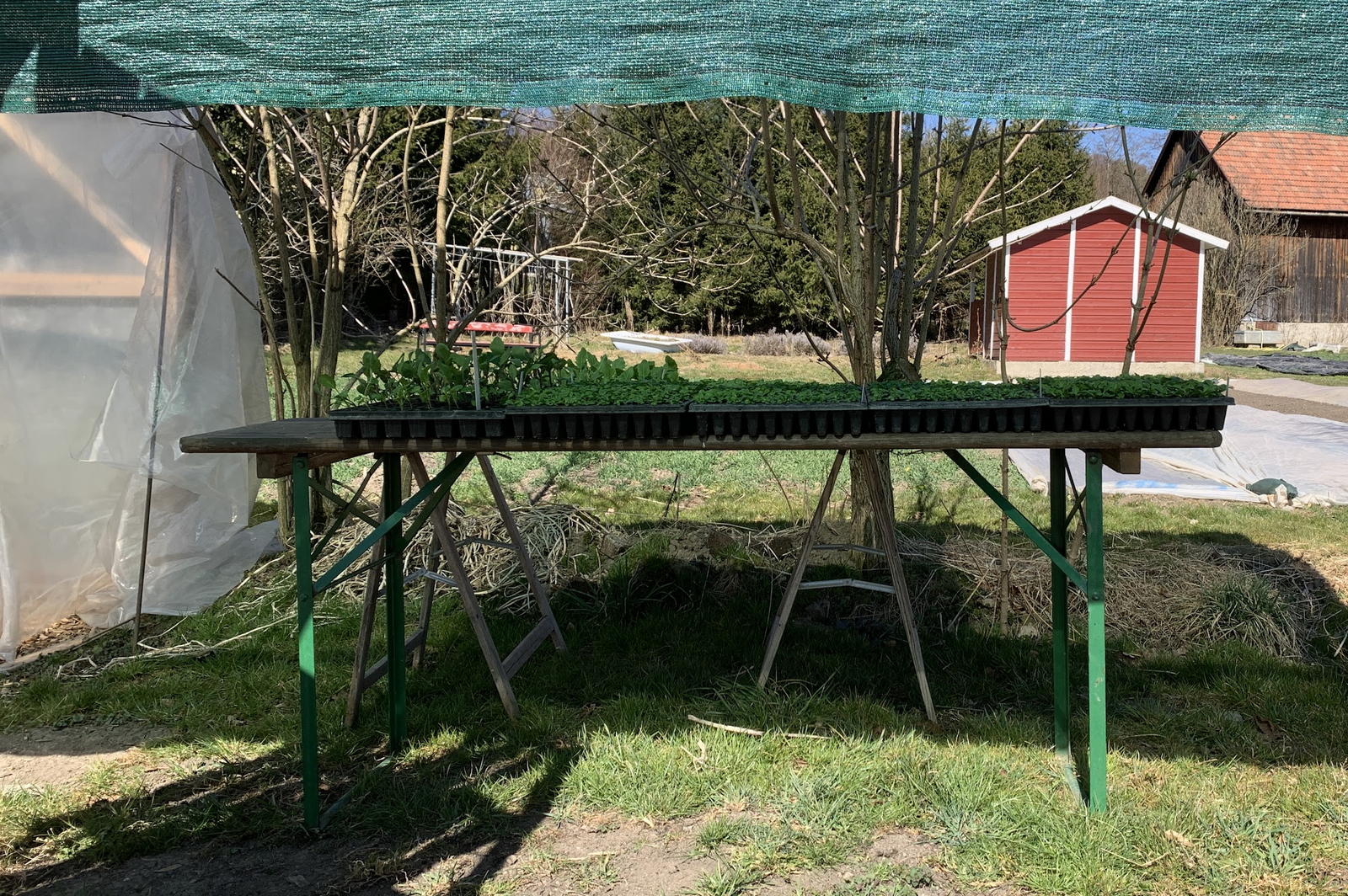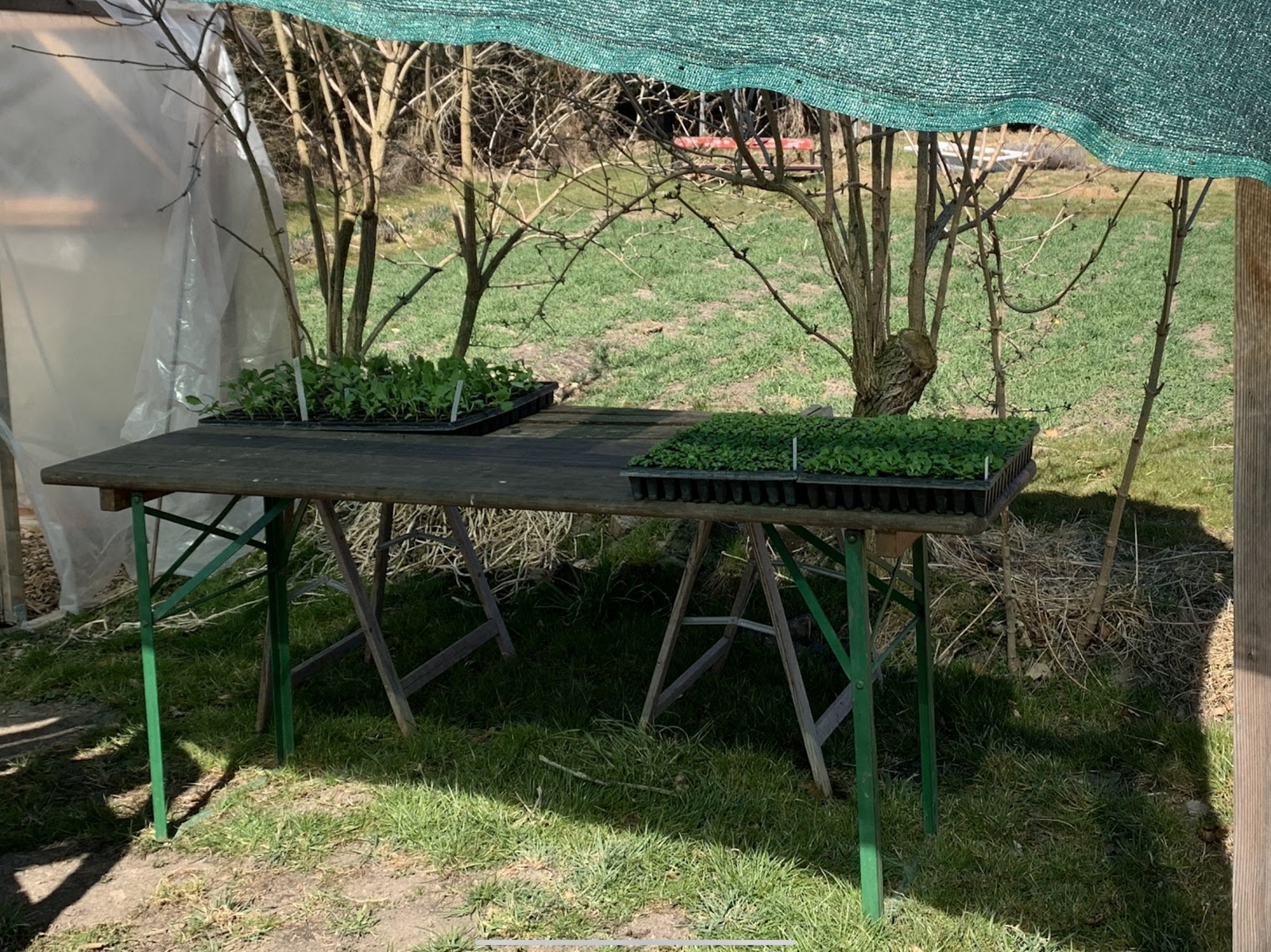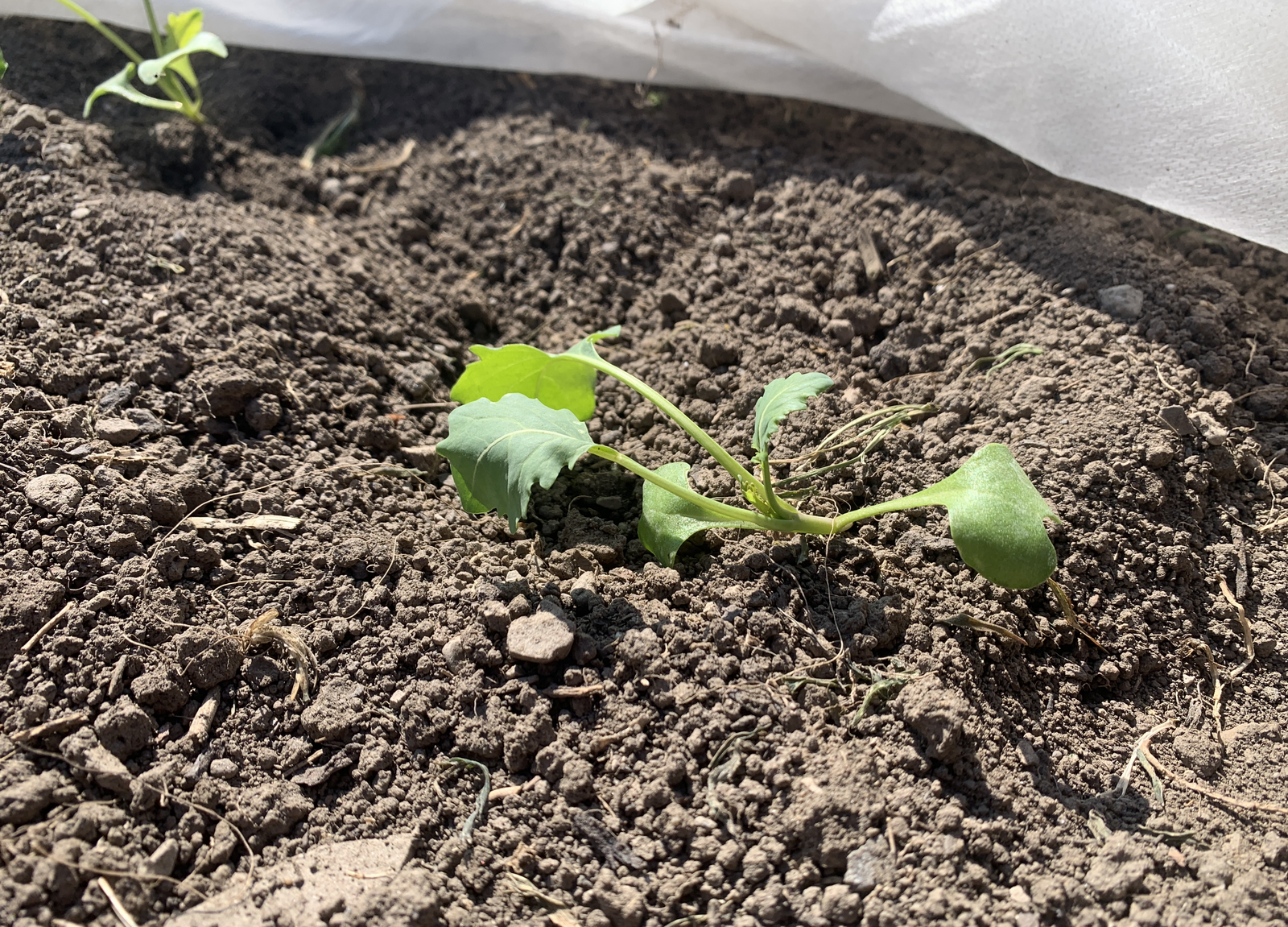
Hardening and Strengthening Plants: Here’s How
Hardening off plants is very important to ensure that your young plants grow well in the bed. In this article, we explain why and how you should harden off and strengthen your young plants before planting them out. There are also tips on planting out vegetable plants!
This Article Contains:
Quick Overview
Hardening Plants
- When? One to two weeks before the planned planting date
- Why? To acclimatize the young plants to wind, cold, temperature fluctuations and direct sunlight
- Which plants? All plants that are grown in advance, such as tomatoes, peppers, chili, pumpkin, zucchini, etc.
Instructions for Hardening Off
- Start slowly by putting the plants outside for a few hours. First choose a shady spot protected from the wind. Increase the number of hours each day.
- After about a week, get the plants used to the sun and slowly expose them to the sun's rays. After three to five days, the plant can then be placed in full sun.
- Towards the end, leave it outside at night to acclimatize it to temperature fluctuations.
Hardening off Seedlings: Why Harden off Plants?
When Growing Vegetable Plants, the next important step after Pricking Out Your Seedlings is to harden off the young plants. Before they are planted in the bed, you should introduce your protégés to life outdoors. On the windowsill, there is no wind, cold or strong temperature fluctuations between day and night. In addition, the small plants have never been exposed to direct sunlight. So that they don't have to get used to all these environmental stimuli when they are planted out, hardening off is essential to strengthen them beforehand. Hardening off stimulates certain metabolic processes in the plants and stores secondary plant substances for protection. They are planted out stronger and can put all their energy into their root system. The cuttings grow better and continue to grow robustly and vigorously.
Getting Plants Used to the Outdoors: It’s That Simple
Only young plants that are grown in advance need to be hardened off. In our latitudes, these are mainly nightshade plants such as eggplants, tomatoes, tomatillos, peppers, chillies and pumpkin plants such as squash, melon, cucumber and zucchinis. These crops require particularly warm temperatures and can only be planted outdoors after the Ice Saints from mid-May. Start hardening off two weeks earlier. However, lettuce, kohlrabi, chard and herbs are also often grown in advance. As a general rule, all plants that have been grown on the windowsill need to be hardened off for one to two weeks. For crops that are planted out early in the year, you should acclimatize the young plants to cold temperatures in particular. However, you should protect them from extreme weather and cover them in the event of frost, for example.


Have You Already Planned Your Beds?
After hardening off, the plants are moved outdoors. Have you already planned your beds? With our bed planner, you can easily plan a colourful mixed crop. Companion plants are displayed directly and you get tips on crop rotation!
Plan Your Bed NowHardening Plants: A Guide
1) Strengthen Vegetable Plants Against Environmental Influences
To make the tender seedlings more robust and stable, you need to expose them to wind and weather. However, start hardening off the young plants slowly, step by step. First, place them in a shady, wind-protected spot and leave them outside for a few hours. Now increase the number of hours your protégés are outside each day. After two or three days, you can also move them to an unprotected place and expose them to wind and minimal temperature fluctuations. Place them back in the sheltered house overnight.
2) Getting Young Plants Used to the Sun
Without getting used to sunlight, the young plants would get sunburn. Only when the plants harden off do they store so-called flavonoids in their surface, which protect them from harmful UV radiation.
How Long Should Plants Get Used to the Sun?
After you have acclimatized your young plants to the temperature and wind outside for a few days to a week, you can slowly start to place the plants in partial shade. Extend the time in the sun every day. After about three to five days, your young plant can now stand in full sun without burning itself.
3) Harden Plants Against the Cold
During the first week, the seedling will gain stability and resistance. Now you can also leave it outside overnight. The plants need to get used to the temperature fluctuations between day and night. At first, cover them to protect them from the cold. After about two nights, the young plants will be hardened off and can spend the night outdoors without additional cover (unless there are spontaneous, severe late frosts!). They are then ready to be planted out.

While you are hardening off your plants, you should keep the soil evenly moist. It is also advisable to fertilize the seedlings once they have reached a certain size and time in the pot. It's best to use organic liquid fertilizer such as nettle slurry or horsetail broth.
Make sure that your plants look healthy during the individual steps. As soon as leaves dry out, die or droop, this is a sign of stress or damage. Then find out what the cause is (e.g. sun or cold) and shorten the time with the respective environmental influence so that the plants can recover. Then you can slowly start hardening off again.
How to Harden off Tomato Plants
Tomatoes are a very popular crop. Due to their enormous variety, they are often grown and planted themselves. Due to their tropical origin, nightshade plants like it warm and are very sensitive to cold. When hardening off tomatoes, make sure that there are no late frosts. If they do, be sure to bring the plants indoors, as they are never frost-hardy! The same applies to other nightshade plants such as peppers, chili peppers, eggplants and pumpkins.
When should tomatoes be put out?
You can start hardening off the tomatoesabout two weeks before the planned planting date. They should already be around two months old and should only be placed outside when the temperature is constant between 12 and 18 degrees. In the event of severe and prolonged cold spells, be sure to put the tomato plants inside! They can only withstand such extreme temperatures for a short time and will then die.
How Long to Harden off Tomatoes?
Tomato plants should also be hardened off for one to two weeks. For plants that will be grown outdoors, it is better to choose two weeks. This will ensure that they are strong and vigorous enough. Only one week is usually enough for greenhouse tomatoes. The influence of wind and weather is not as strong here.
Planting Out: From the Windowsill to Outdoors
After hardening off the young plants, they are planted out. Now they are ready for life outdoors. Most crops are planted out in mid-May, after the last frosts. This is especially true for heat-loving plants such as tomatoes, peppers, etc. Frost-hardy plants can also be planted out earlier, e.g. kohlrabi, various winter lettuces and cabbage. Depending on the crop, you should find out in advance when it is possible to plant them out. For a good start, choose a dry, windless day without extreme temperatures.

Protect Plants From Frost
In general, you should make sure to water your young plants well when planting out (unless frost is forecast for that day). If frost is forecast, it is also advisable to protect the seedlings with fleece for the first few days. As an alternative to classic fleece, you can also reuse old blankets or newspapers. Coconut or hemp mats and old jute sacks are also suitable. Once the young plants are well established, they will eventually be able to withstand the frost. Until then, they will appreciate some protection. In general, you should protect all freshly planted young plants from frost. Frost can damage young plants in particular, which can cause them to die.
Want to get helpful gardening tips all year round and plan your own beds in the best possible way? Then register here or download the Fryd app for Android or iOS.
Fryd - your digital bed planner

Marie
Marie is an agronomist. She is particularly interested in the sustainable and organic cultivation of vegetables and other plants. In her own garden, she gained experience and likes to try things out to learn from nature. She is particularly interested in the values and principles of permaculture, in order to contribute not only to the well-being of nature, but also to the well-being of people and future generations.
Learn MoreCurrent Topics in the Community

Liked 1 times
💚🦋🐜🐌🐛🐞🐝🌻🦋💚
Hi, I'm currently creating a plan and have noticed that I can't enter my plants as dead/harvested on my pc/notebook, I can only delete them. Is that the case or am I just too blind to find it? Thanks for your feedback and a happy new year ^^


Liked 7 times
My homemade beeswax candles made from my own beeswax Now the problem is that I can no longer reach my vegetables - even the digging fork is frozen solid - I can only harvest Brussels sprouts and kale
Popular Articles

Overwintering Parsley: How to Do It Successfully

How to Grow Lettuce in Winter: Varieties, Sowing, Harvesting

Growing Sage Plant: Tips for Sowing and Harvesting

What Herbs Can Be Planted Together?

Create & Design a Permaculture Garden

Overwintering Plants: Tubs, Pots and Raised Beds

Pruning, Fertilizing & Propagating Currants: Care Tips

Pruning Raspberries: How to Do It

Vegetable Garden With Greenhouse: How to Use Greenhouse Effect

Winterizing Beds and the Garden: How to Do It
FAQ
Why should plants be hardened?
Plants must be hardened off to acclimatize them to wind, cold, temperature fluctuations and direct sunlight before they are planted out. This strengthens their resilience.
When do you start hardening off the plants?
Hardening off should begin one to two weeks before the planned planting out in order to gradually adapt the young plants to the outdoor conditions.
How do you acclimatize plants to the sun?
After a few days of acclimatization to temperature and wind, the plants should slowly be exposed to sunlight for longer periods of time, starting with shady spots and working up to full sun.
At what temperatures can tomatoes be hardened off outside?
Your tomato plants should be around two months old and should only be placed outside when the temperature is constant between 12 and 18 degrees. To harden them off at night, the temperatures should always be above 8 degrees.